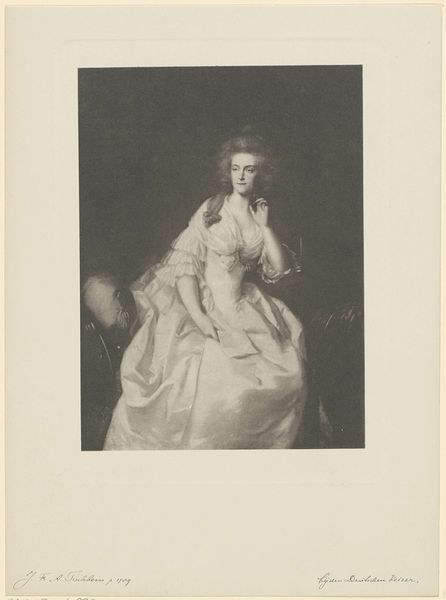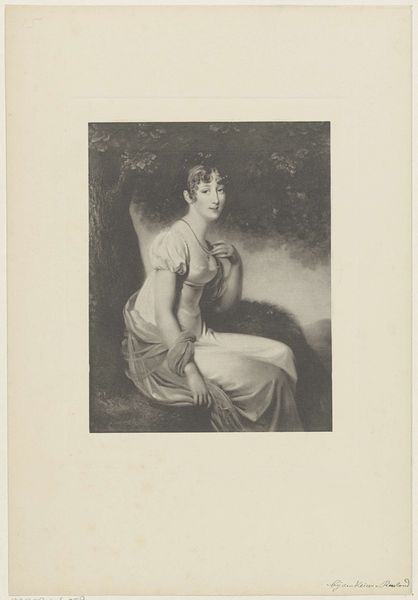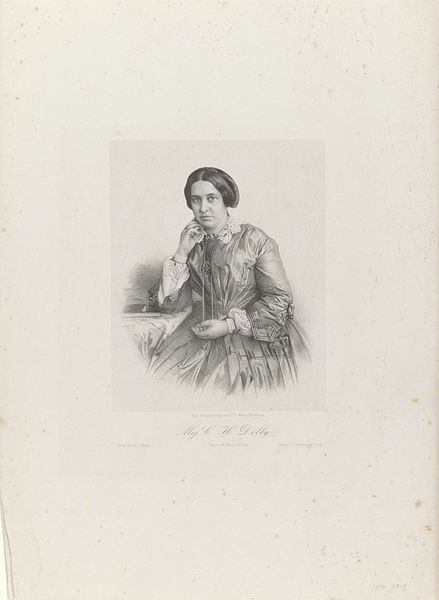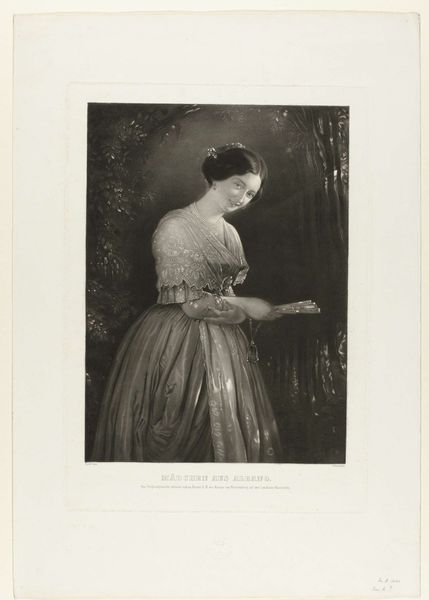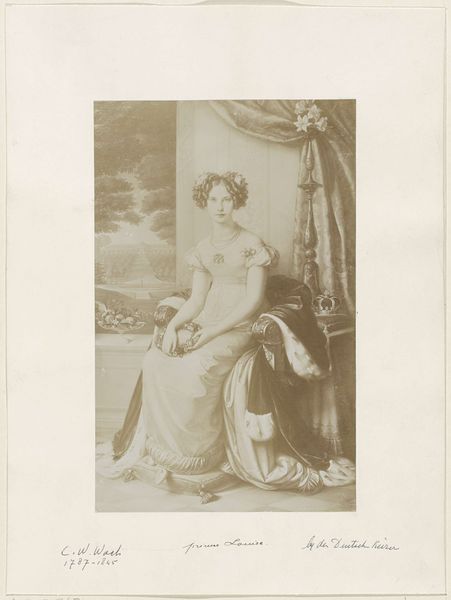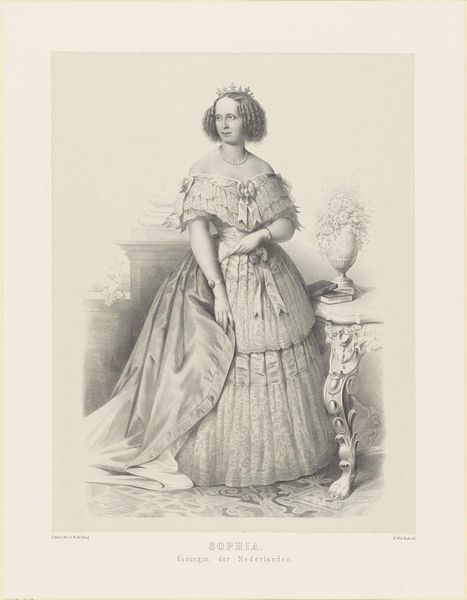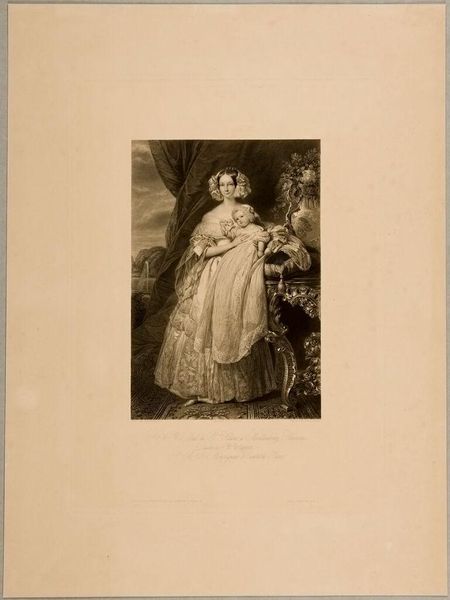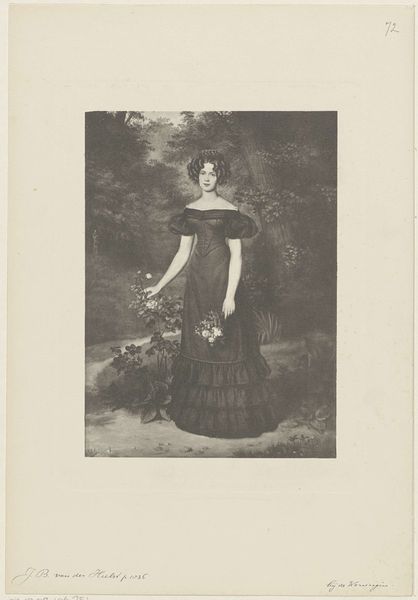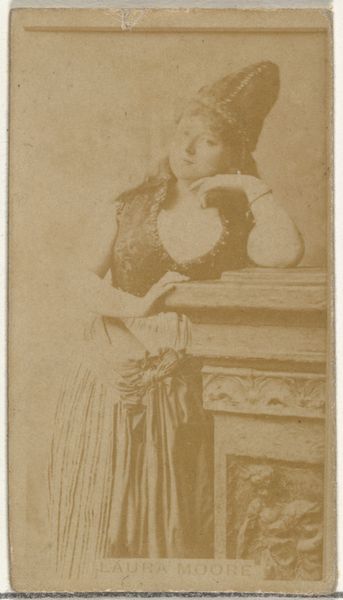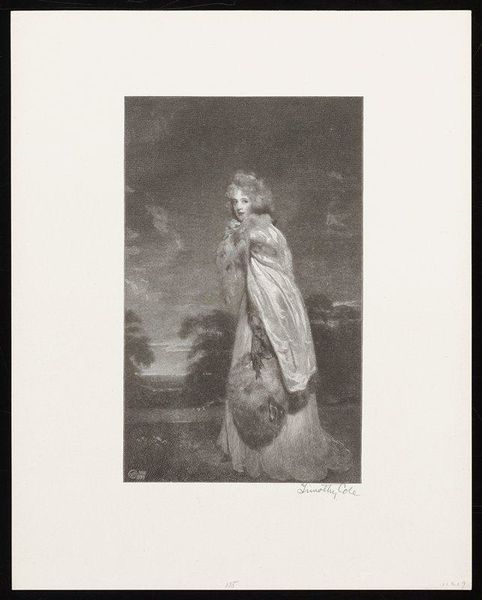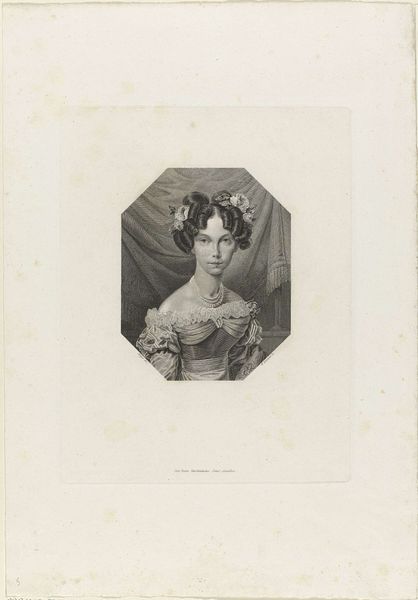
drawing, print
#
portrait
#
drawing
# print
#
old engraving style
#
history-painting
#
academic-art
Dimensions: height 249 mm, width 179 mm
Copyright: Rijks Museum: Open Domain
Curator: Welcome. Here we have an intriguing 19th-century drawing, presented as a print: a "Portret van Willem III, prins van Oranje", attributed to an anonymous artist, here at the Rijksmuseum. Editor: My first impression is one of restrained opulence. The delicate rendering suggests refinement, yet the subdued monochrome palette gives it a slightly somber air. Curator: Indeed. Looking through a contemporary lens, consider the weight of inherited power embodied by this young prince, potentially setting the stage for later Dutch societal hierarchies and inequalities, especially regarding gender roles. This image then also speaks to ideas around constructed identities and how notions of masculinity and femininity can influence representation. Editor: A good point. Formally, notice how the artist uses light and shadow to model the prince's figure, giving him a sense of depth. The flowing lines of his robe contrast beautifully with the sharp geometric division behind him, offering a complex visual dynamic. It's the use of chiaroscuro to establish presence, both spatially and, yes, symbolically. Curator: That contrast also serves to draw attention to the prince's gaze, directed straight at us—as though we are being held accountable, even centuries later. The positioning near the ornamental vase is also symbolic. Editor: Symbolism absolutely conveyed by the use of shape and composition. But let’s note how the textural variety—the smoothness of his skin versus the crinkled silk of the robe—creates a sensuous visual experience. I would say it shows the talent of the original hand that has translated through time. Curator: True. The artist may have wanted to explore such qualities or to deliberately create certain gendered associations via those same means. That said, I keep being drawn back to what representation as history reveals. Editor: For me, the beauty resides in how all elements interact, not any single theory to explain it all. However, with these observations combined, perhaps we've approached the painting in a manner where historical meaning meets art's aesthetic structure. Curator: It offers some interesting areas to consider regarding the boy in history—representation, responsibility, gender, identity—and in thinking about representation today. Editor: I can agree with that assessment; art engages, even challenges, which makes encounters such as this meaningful beyond the surface.
Comments
No comments
Be the first to comment and join the conversation on the ultimate creative platform.
